Hayashi Castle
-Two castles used for residence and fortress-
Overview
Name: Hayashi Castle
Alias:
Place: Satoyamabe Matsumoto city, Nagano
Location: 36.226647225363585, 138.01922956418622
Type: Mountain Castle
Built: Originally 15th century, expanded in 16th century
Remaining remnants: Stone walls, clay walls and dry moats
Title:
East half of current Matsumoto city is a flat land but also a natural fortress guarded its eastward by Chikuma mountains, northward and southward by ridges protruded from mountains, and westward by Azusagawa river. Due to above geographical location, historically this area had been the center of Shinano country called as Fuchu (means the location of country capital).
Since the beginning of Muromachi era, Ogasawara clan, one of the major house of Minamoto clan, was appointed as a governor of Shinano country by Muromachi shogunate. They resided at this area, and built many castles such as Hayashi castle, Kirihara castle, Yamabe castle and Haibara castle at surrounding mountains to protect their territory. (Refer this entry about castles of Ogasawara clan).
Fukashi castle, which later became Matsumoto castle, was one of the branch castle of Ogasawara clan, to protect the entrance of this area behind Azusagawa river. Ogasawara clan was also known as a house of of courtesy, and their branch house stayed at Kyoto and lectured to many high class people.
But the basis of Ogasawara clan in Shinano province was quite weak. Shinano country is separated to many small basin divided mountains, and powerful local clans such as Murakami clan, Takanashi clan or Unno clan existed at each basin. They hated to be governed centrally by Ogasawara clan and resisted. Once the governor of Ogasawara clan was defeated ally of these local lords and left Shinano province, and later Ogasawara clan came back to Shinano province but could not establish their dominance.
Further, Ogasawara clan itself had internal conflict and diminished their power. In the former half of 16th century main stream Ogasawara clan once united branch houses and at last established their governance, but just after that Shingen Takeda (1521-1573), a warlord of Kai province (Yamanashi prefecture) which already seized Suwa region at the south of Matsumoto area, started to invade Matsumoto area.
Nagatoki Ogasawara (1514-1583), leader of Ogasawara clan at that time, resisted to Shingen, but suffered severe defeat at the battle of Shiojiri-Toge Pass in 1548. At this battle Ogasawara clan had larger troop against Shingen, but it was difficult to command a mixed up army of Ogasawara clan and other local lords, and Shingen also used excellent tactics. After the battle Shingen started to advance to Matsumoto area, and Ogasawara finally lost Hayashi castle and left Shinano province in 1548.
Takeda clan which seized Matsumoto area expanded Fukushi castle and used it as their main base in this area, but also continued to use mountain castles of Ogasawara clan. Among the continuous battle agaist Kenshin Uesugi (1530-1578), a warlord of Echigo province (Niigata prefecture) at Nagano basin, the norther next area to Matsumoto, these castle might be strengthened to guard backward.
In 1582, Takeda clan was extinguished by central ruler Nobunaga Oda (1534-1582). Matsumoto area was once given to Yoshimasa Kiso (1540-1595), a local lord of Kiso valley and who supported Nobunaga, but after the death of Nobunaga at the incident of Honnoji, a coup d’etat by his general Mitsuhide Akechi (1528-1582), there became no authority in this area.
Under such situation, relatives of Ogasawara clan formerly took refuge and seek chances in other countries returned to their territory and restored their clan, under the support of Ieyasu Tokugawa (1534-1582), a warlord of Mikawa province (east half of Aichi prefecture) and who aimed at Shinano country.
It was fortunate for Ogasawara clan that Ieyasu aimed at rapid expansion to Shinano country, thus they utilized the name of former governor to gather the local lords. Supported by former retainers, Ogasawara clan could retrieve Matsumoto area from Yoshimasa and kept it. To hold their land in confused situation, Ogasawara clan was thought to strength their former castles.
As above, Hayashi castle consist of two castles, it means Hayashi Ojiro (larger Hayashi castle) and Hayashi Kojiro (smaller Hayashi castle) located at adjoining hills, used as residence and fort respectively.
Hayashi large castle was a main base of Ogasawara clan, and at the top of the mountain there was a 100 meter square flat space surrounded by clay walls and broken stone walls, might be used as a ground for splendid residence of Ogasawara clan. This central area is guarded by continuous terraces on front side ridge and dry malls at backside ridge, but defense facilities of this castle is are not so secure. Anyway Hayashi castle is a large castle suitable for the governor of Shinano country.
On the other hand, Hayashi small castle was a small but secure fortress. This castle is located at the entrance of the valley between Hayashi large castle and Hayashi small castle, and might be built as a defense point of the valley and evaluation place in case of attack. From halfway to hilltop area there locate several terraces, and central araa at the top of the hill is securely guarded by stone walls surrounding the top of precipice of central area like a headband. This stone wall might be built as a shelter for soldiers, not to cover the slope with stones like modern castles.
The backside is a weak point of this castle connected to backward mountains, thus this ridge is securely blocked by combination of turret basement, tall stone walls and deep continuous moats. Looking at structure of this castle, Hayashi small castle was newer than Hayashi old castle, might be built at turbulent period after the extinction of Takeda clan.
In 1590, along with their master Ieyasu Tokugawa, Ogasawara clan moved to Kanto region, and Hayashi castle was abolished at that time. After mamy twist and turns, Ogasawara clan prospered as a hereditary lord of Tokugawa clan in Edo era, and served commander of large and important castles such as Matsumoto castle, Akashi castle or Kokura castle. Today structures of both castles well remain on mountains, and we can see the authority of old governor and tenacity for retrieving their old territory of Ogasawara clan.
60 minutes walk from JR East Shinonoisen line Matsumoto station. 20 minutes drive from Nagano Jidoshado Expressway Matsumoto interchange.
Matsumoto Castle -Black main tower surrounded by mountains-
Akashi Castle -Castle with a pair of original three story turrets-
Kokura Castle -Gate to Kyushu island-
Castles of Ogasawara clan -Castles at 1000 meter above sea level-
Type: Mountain Castle
Built: Originally 15th century, expanded in 16th century
Remaining remnants: Stone walls, clay walls and dry moats
Title:
Brief History
Hayashi castle (林城) is located on a ridge protruding northwest ward from Takato mountain, at the southeast part of Matsumoto city. Sandwitching small valley there are two ridges, and at the north ridge there is a castle named Hayashi Ojiro (Hayashi large castle), and on the south ridge another castle named Hayashi Kojiro (Hayashi small castle) was built. The distance of both castle is only about 500 meter, and these two castle were operate unitedly. Hayashi castle had been the main base of Ogasawara clan, the house of the governor of Shinano province (Nagano prefecture).Matsumoto basin and Ogasawara clan
East half of current Matsumoto city is a flat land but also a natural fortress guarded its eastward by Chikuma mountains, northward and southward by ridges protruded from mountains, and westward by Azusagawa river. Due to above geographical location, historically this area had been the center of Shinano country called as Fuchu (means the location of country capital).
Since the beginning of Muromachi era, Ogasawara clan, one of the major house of Minamoto clan, was appointed as a governor of Shinano country by Muromachi shogunate. They resided at this area, and built many castles such as Hayashi castle, Kirihara castle, Yamabe castle and Haibara castle at surrounding mountains to protect their territory. (Refer this entry about castles of Ogasawara clan).
Fukashi castle, which later became Matsumoto castle, was one of the branch castle of Ogasawara clan, to protect the entrance of this area behind Azusagawa river. Ogasawara clan was also known as a house of of courtesy, and their branch house stayed at Kyoto and lectured to many high class people.
Defeat and lost by Shingen Takeda
But the basis of Ogasawara clan in Shinano province was quite weak. Shinano country is separated to many small basin divided mountains, and powerful local clans such as Murakami clan, Takanashi clan or Unno clan existed at each basin. They hated to be governed centrally by Ogasawara clan and resisted. Once the governor of Ogasawara clan was defeated ally of these local lords and left Shinano province, and later Ogasawara clan came back to Shinano province but could not establish their dominance.
Further, Ogasawara clan itself had internal conflict and diminished their power. In the former half of 16th century main stream Ogasawara clan once united branch houses and at last established their governance, but just after that Shingen Takeda (1521-1573), a warlord of Kai province (Yamanashi prefecture) which already seized Suwa region at the south of Matsumoto area, started to invade Matsumoto area.
Nagatoki Ogasawara (1514-1583), leader of Ogasawara clan at that time, resisted to Shingen, but suffered severe defeat at the battle of Shiojiri-Toge Pass in 1548. At this battle Ogasawara clan had larger troop against Shingen, but it was difficult to command a mixed up army of Ogasawara clan and other local lords, and Shingen also used excellent tactics. After the battle Shingen started to advance to Matsumoto area, and Ogasawara finally lost Hayashi castle and left Shinano province in 1548.
Takeda clan which seized Matsumoto area expanded Fukushi castle and used it as their main base in this area, but also continued to use mountain castles of Ogasawara clan. Among the continuous battle agaist Kenshin Uesugi (1530-1578), a warlord of Echigo province (Niigata prefecture) at Nagano basin, the norther next area to Matsumoto, these castle might be strengthened to guard backward.
Restoration of Ogasawara clan
In 1582, Takeda clan was extinguished by central ruler Nobunaga Oda (1534-1582). Matsumoto area was once given to Yoshimasa Kiso (1540-1595), a local lord of Kiso valley and who supported Nobunaga, but after the death of Nobunaga at the incident of Honnoji, a coup d’etat by his general Mitsuhide Akechi (1528-1582), there became no authority in this area.
Under such situation, relatives of Ogasawara clan formerly took refuge and seek chances in other countries returned to their territory and restored their clan, under the support of Ieyasu Tokugawa (1534-1582), a warlord of Mikawa province (east half of Aichi prefecture) and who aimed at Shinano country.
It was fortunate for Ogasawara clan that Ieyasu aimed at rapid expansion to Shinano country, thus they utilized the name of former governor to gather the local lords. Supported by former retainers, Ogasawara clan could retrieve Matsumoto area from Yoshimasa and kept it. To hold their land in confused situation, Ogasawara clan was thought to strength their former castles.
Structure of Hayashi castle
As above, Hayashi castle consist of two castles, it means Hayashi Ojiro (larger Hayashi castle) and Hayashi Kojiro (smaller Hayashi castle) located at adjoining hills, used as residence and fort respectively.
Hayashi large castle was a main base of Ogasawara clan, and at the top of the mountain there was a 100 meter square flat space surrounded by clay walls and broken stone walls, might be used as a ground for splendid residence of Ogasawara clan. This central area is guarded by continuous terraces on front side ridge and dry malls at backside ridge, but defense facilities of this castle is are not so secure. Anyway Hayashi castle is a large castle suitable for the governor of Shinano country.
On the other hand, Hayashi small castle was a small but secure fortress. This castle is located at the entrance of the valley between Hayashi large castle and Hayashi small castle, and might be built as a defense point of the valley and evaluation place in case of attack. From halfway to hilltop area there locate several terraces, and central araa at the top of the hill is securely guarded by stone walls surrounding the top of precipice of central area like a headband. This stone wall might be built as a shelter for soldiers, not to cover the slope with stones like modern castles.
The backside is a weak point of this castle connected to backward mountains, thus this ridge is securely blocked by combination of turret basement, tall stone walls and deep continuous moats. Looking at structure of this castle, Hayashi small castle was newer than Hayashi old castle, might be built at turbulent period after the extinction of Takeda clan.
Afterward of Hayashi castle and Ogasawara clan
In 1590, along with their master Ieyasu Tokugawa, Ogasawara clan moved to Kanto region, and Hayashi castle was abolished at that time. After mamy twist and turns, Ogasawara clan prospered as a hereditary lord of Tokugawa clan in Edo era, and served commander of large and important castles such as Matsumoto castle, Akashi castle or Kokura castle. Today structures of both castles well remain on mountains, and we can see the authority of old governor and tenacity for retrieving their old territory of Ogasawara clan.
Access
60 minutes walk from JR East Shinonoisen line Matsumoto station. 20 minutes drive from Nagano Jidoshado Expressway Matsumoto interchange.
Related Castles
Matsumoto Castle -Black main tower surrounded by mountains-
Akashi Castle -Castle with a pair of original three story turrets-
Kokura Castle -Gate to Kyushu island-
Castles of Ogasawara clan -Castles at 1000 meter above sea level-































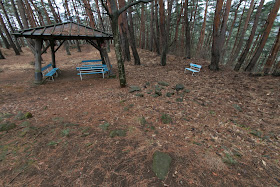







































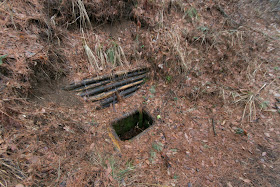

























































































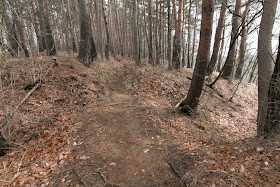

















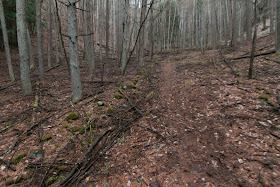






























































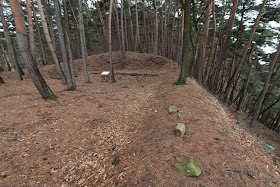











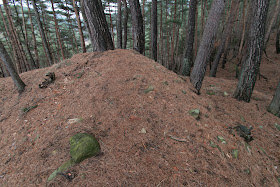












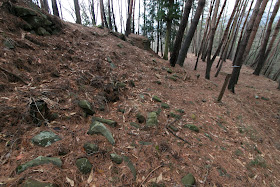










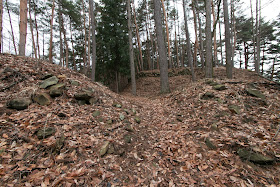












No comments:
Post a Comment